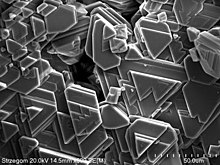
Crystallography is the experimental science of determining the arrangement of atoms in crystalline solids. Crystallography is a fundamental subject in the fields of materials science and solid-state physics. The word crystallography is derived from the Ancient Greek word κρύσταλλος, with its meaning extending to all solids with some degree of transparency, and γράφειν. In July 2012, the United Nations recognised the importance of the science of crystallography by proclaiming that 2014 would be the International Year of Crystallography.

DESY, short for Deutsches Elektronen-Synchrotron, is a national research centre for fundamental science located in Hamburg and Zeuthen near Berlin in Germany. It operates particle accelerators used to investigate the structure, dynamics and function of matter, and conducts a broad spectrum of interdisciplinary scientific research in four main areas: particle and high energy physics; photon science; astroparticle physics; and the development, construction and operation of particle accelerators. Its name refers to its first project, an electron synchrotron. DESY is publicly financed by the Federal Republic of Germany and the Federal States of Hamburg and Brandenburg and is a member of the Helmholtz Association of German Research Centres.
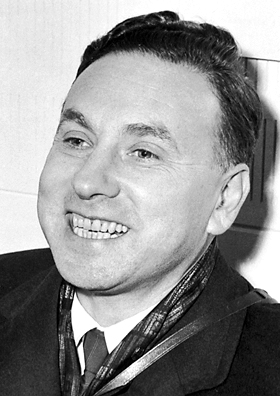
Robert Hofstadter was an American physicist. He was the joint winner of the 1961 Nobel Prize in Physics "for his pioneering studies of electron scattering in atomic nuclei and for his consequent discoveries concerning the structure of nucleons".
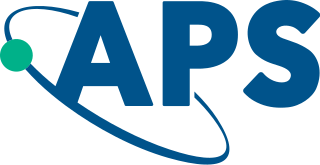
The American Physical Society (APS) is a not-for-profit membership organization of professionals in physics and related disciplines, comprising nearly fifty divisions, sections, and other units. Its mission is the advancement and diffusion of knowledge of physics. The society publishes more than a dozen scientific journals, including the prestigious Physical Review and Physical Review Letters, and organizes more than twenty science meetings each year. APS is a member society of the American Institute of Physics. Since January 2021 the organization has been led by chief executive officer Jonathan Bagger.

The Institute of Mathematics and its Applications (IMA) is the UK's chartered professional body for mathematicians and one of the UK's learned societies for mathematics.

The Society of Exploration Geophysicists (SEG) is a learned society dedicated to promoting the science and education of exploration geophysics in particular and geophysics in general. The Society fosters the expert and ethical practice of geophysics in the exploration and development of natural resources, in characterizing the near-surface, and in mitigating earth hazards. As of November 2019, SEG has more than 14,000 members working in more than 114 countries. SEG was founded in 1930 in Houston, Texas but its business office has been headquartered in Tulsa, Oklahoma since the mid-1940s. While most SEG members are involved in exploration for petroleum, SEG members also are involved in application of geophysics methods to mineral exploration as well as environmental and engineering problems, archaeology, and other scientific endeavors. SEG publishes The Leading Edge (TLE), a monthly professional magazine, Geophysics, a peer-reviewed archival publication, and Interpretation, a peer-reviewed journal co-published by SEG and the American Association of Petroleum Geologists.

The Canadian Mathematical Society (CMS) is an association of professional mathematicians dedicated to the interests of mathematical research, outreach, scholarship and education in Canada. It serves the national community through the publication of academic journals, community bulletins, and the administration of mathematical competitions.
Society for Industrial and Applied Mathematics (SIAM) is a professional society dedicated to applied mathematics, computational science, and data science through research, publications, and community. SIAM is the world's largest scientific society devoted to applied mathematics, and roughly two-thirds of its membership resides within the United States. Founded in 1951, the organization began holding annual national meetings in 1954, and now hosts conferences, publishes books and scholarly journals, and engages in advocacy in issues of interest to its membership. Members include engineers, scientists, and mathematicians, both those employed in academia and those working in industry. The society supports educational institutions promoting applied mathematics.
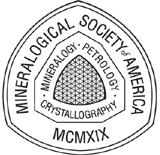
The Mineralogical Society of America (MSA) is a scientific membership organization. MSA was founded in 1919 for the advancement of mineralogy, crystallography, geochemistry, and petrology, and promotion of their uses in other sciences, industry, and the arts. It encourages fundamental research about natural materials; supports the teaching of mineralogical concepts and procedures to students of mineralogy and related arts and sciences; and attempts to raise the scientific literacy of society with respect to issues involving mineralogy. The Society encourages the general preservation of mineral collections, displays, mineral localities, type minerals and scientific data. MSA represents the United States with regard to the science of mineralogy in any international context. The Society was incorporated in 1937 and approved as a nonprofit organization in 1959.

The Institute of Materials, Minerals and Mining (IOM3) is a UK engineering institution whose activities encompass the whole materials cycle, from exploration and extraction, through characterisation, processing, forming, finishing and application, to product recycling and land reuse. It exists to promote and develop all aspects of materials science and engineering, geology, mining and associated technologies, mineral and petroleum engineering and extraction metallurgy, as a leading authority in the worldwide materials and mining community.
The American Society for Cell Biology (ASCB) is a professional society that was founded in 1960.

The Geochemical Society is a nonprofit scientific organization founded to encourage the application of chemistry to solve problems involving geology and cosmology. The society promotes understanding of geochemistry through the annual Goldschmidt Conference, publication of a peer-reviewed journal and electronic newsletter, awards programs recognizing significant accomplishments in the field, and student development programs. The society's offices are located on the campus of the Carnegie Institution for Science in Washington, DC.

Ernst G. Bauer is a German-American physicist known for his studies in the field of surface science, thin film growth and nucleation mechanisms and the invention in 1962 of the Low Energy Electron Microscopy (LEEM). In the early 1990s, he extended the LEEM technique in two directions by developing Spin-Polarized Low Energy Electron Microscopy (SPLEEM) and Spectroscopic Photo Emission and Low Energy Electron Microscopy (SPELEEM). He is currently Distinguished Research Professor Emeritus at the Arizona State University.
The American Society for Bone and Mineral Research (ASBMR) is a professional, scientific and medical society established in 1977 to promote excellence in bone and mineral research and to facilitate the translation of that research into clinical practice. The ASBMR has a membership of nearly 4,000 physicians, basic research scientists, and clinical investigators from around the world.
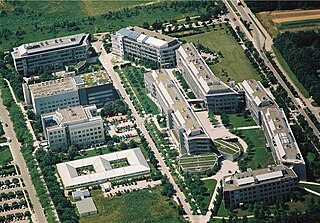
The Center for Integrated Protein Science Munich (CIPSM) is a cluster of excellence in sciences located in Munich. It is an association of research groups of the Ludwig Maximilian University of Munich, the Technical University of Munich, the Helmholtz Center Munich, and the Max Planck Institutes of biochemistry and neurobiology in Martinsried. Research at the center expands from isolated proteins up to proteins in living organisms applying methods of biophysics, biochemistry, medicine, and biology.
Clara Franzini-Armstrong is an Italian-born American electron microscopist, and Professor Emeritus of Cell and Developmental Biology at University of Pennsylvania.

John M. "Jack" Carpenter was an American nuclear engineer known as the originator of the technique for utilizing accelerator-induced intense pulses of neutrons for research and developing the first spallation slow neutron source based on a proton synchrotron, the Intense Pulsed Neutron Source (IPNS). He died on 10 March 2020.
Dipankar Das Sarma, popularly known as D.D. Sarma, is an Indian scientist and structural chemist, known for his researches in the fields of Solid State Chemistry, Spectroscopy, Condensed Matter Physics, Materials Science, and Nanoscience. He is a former MLS Chair Professor of Physics and Chairman of the Centre for Advanced Materials and the GAST Professor of Uppsala University, Sweden, A recipient of TWAS Physics Prize and the UNESCO Biennial Javed Husain Prize, Sarma was honored by the Council for Scientific and Industrial Research (CSIR), Government of India, in 1994, with the Shanti Swarup Bhatnagar Prize for Science and Technology.
The British Vacuum Council (BVC) is the link between scientists and engineers within the UK and the International Union for Vacuum Science, Technique and Applications (IUVSTA).

SOLARIS is the only synchrotron in Central-Eastern Europe. Built in Poland in 2015, under the auspices of the Jagiellonian University, it is located on the Campus of the 600th Anniversary of the Jagiellonian University Revival, in the southern part of Krakow. It is the central facility of the National Synchrotron Radiation Centre SOLARIS.

